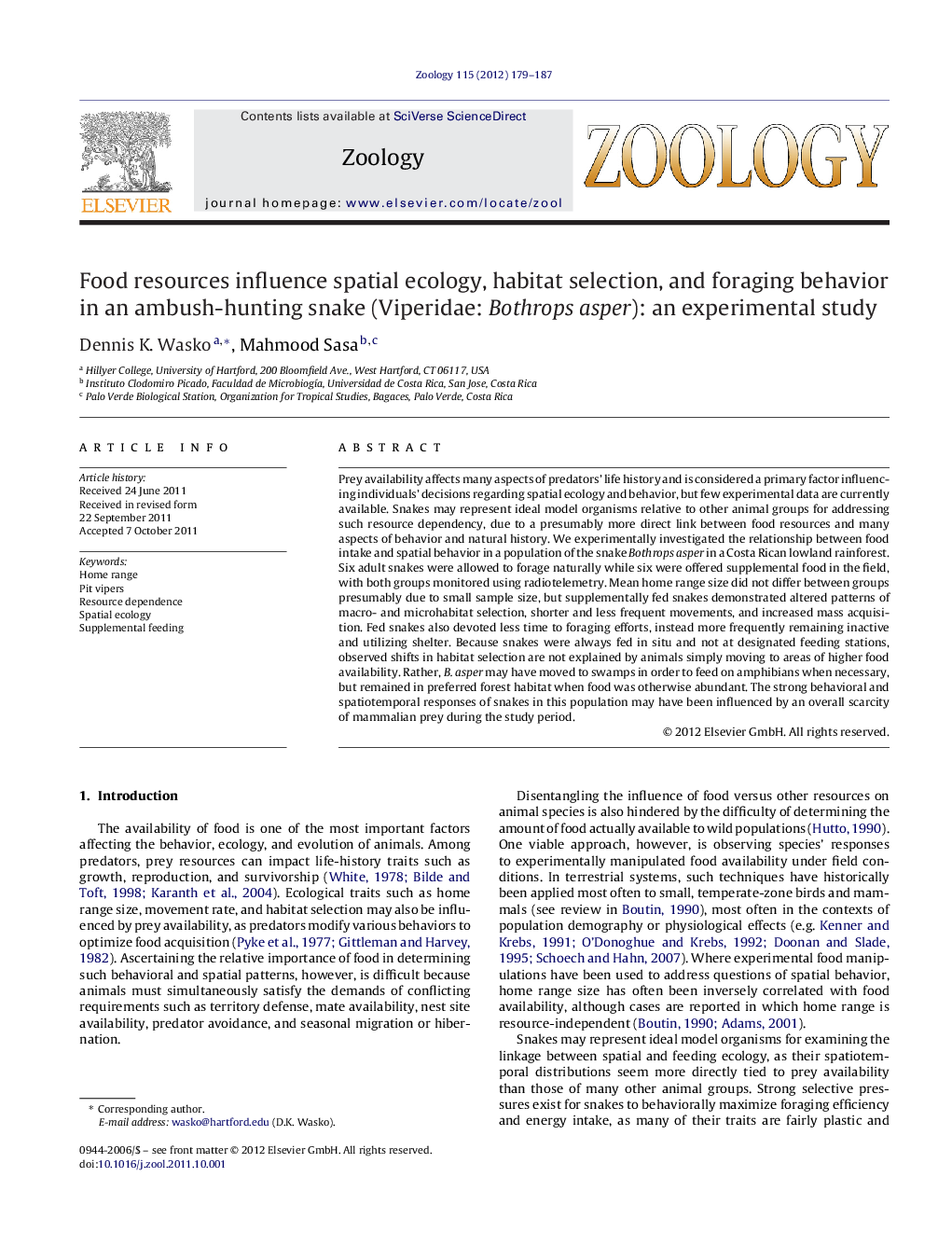| Article ID | Journal | Published Year | Pages | File Type |
|---|---|---|---|---|
| 2791168 | Zoology | 2012 | 9 Pages |
Prey availability affects many aspects of predators’ life history and is considered a primary factor influencing individuals’ decisions regarding spatial ecology and behavior, but few experimental data are currently available. Snakes may represent ideal model organisms relative to other animal groups for addressing such resource dependency, due to a presumably more direct link between food resources and many aspects of behavior and natural history. We experimentally investigated the relationship between food intake and spatial behavior in a population of the snake Bothrops asper in a Costa Rican lowland rainforest. Six adult snakes were allowed to forage naturally while six were offered supplemental food in the field, with both groups monitored using radiotelemetry. Mean home range size did not differ between groups presumably due to small sample size, but supplementally fed snakes demonstrated altered patterns of macro- and microhabitat selection, shorter and less frequent movements, and increased mass acquisition. Fed snakes also devoted less time to foraging efforts, instead more frequently remaining inactive and utilizing shelter. Because snakes were always fed in situ and not at designated feeding stations, observed shifts in habitat selection are not explained by animals simply moving to areas of higher food availability. Rather, B. asper may have moved to swamps in order to feed on amphibians when necessary, but remained in preferred forest habitat when food was otherwise abundant. The strong behavioral and spatiotemporal responses of snakes in this population may have been influenced by an overall scarcity of mammalian prey during the study period.
